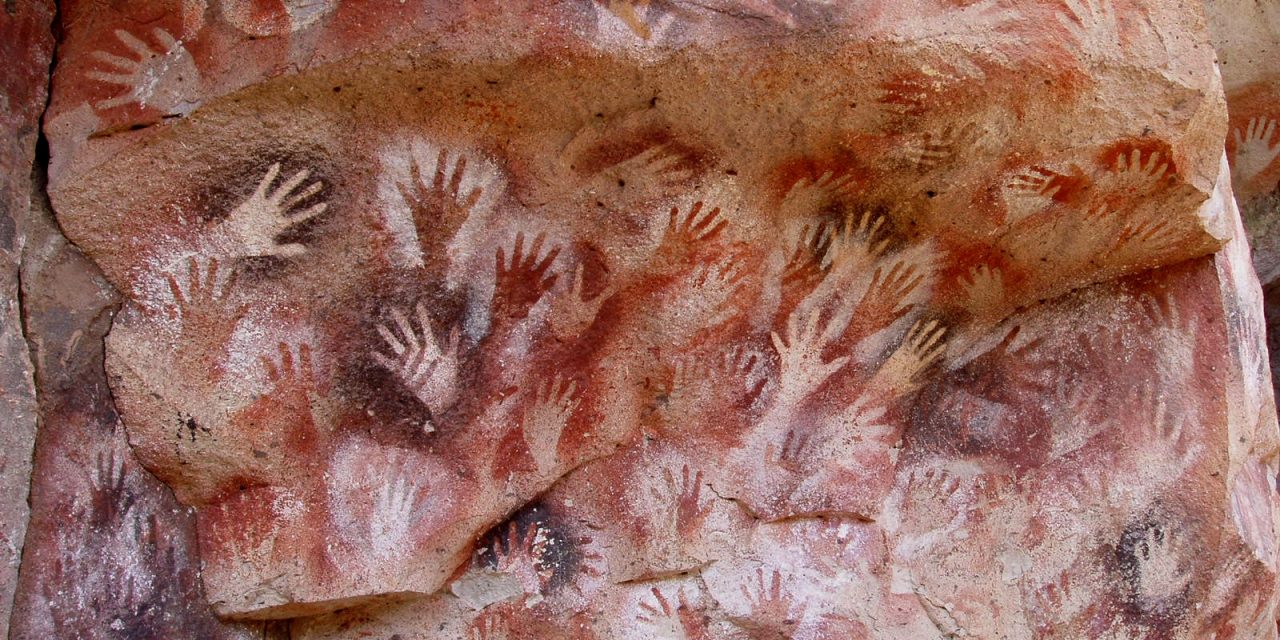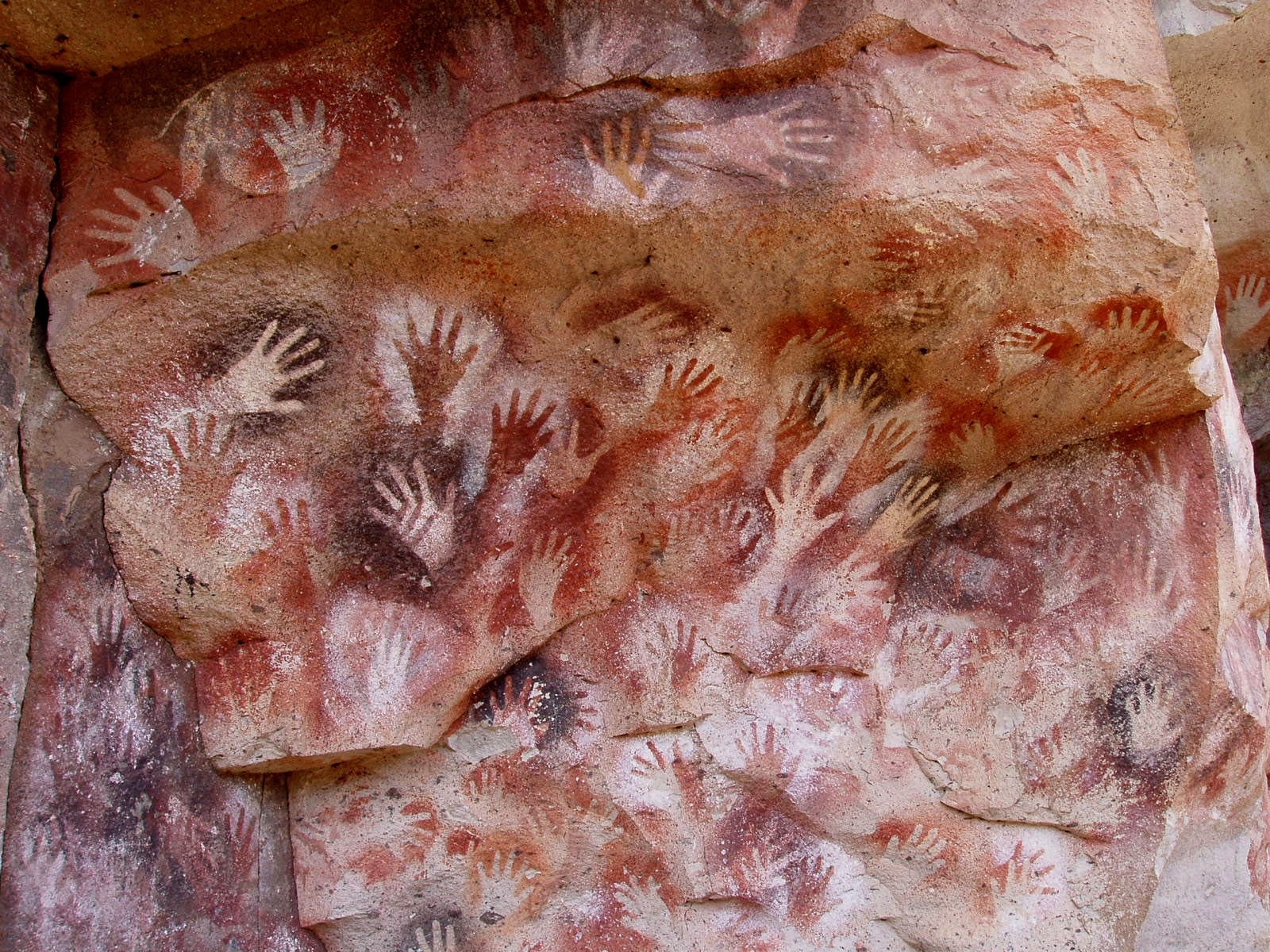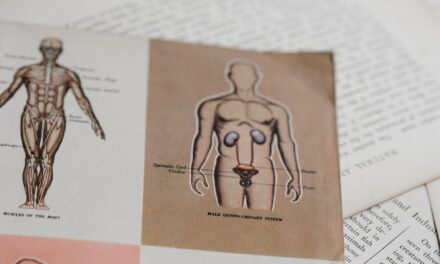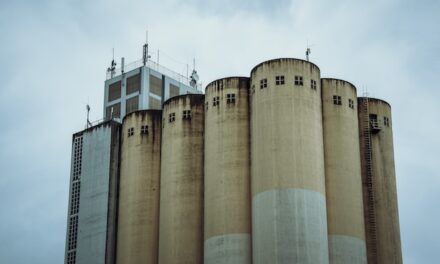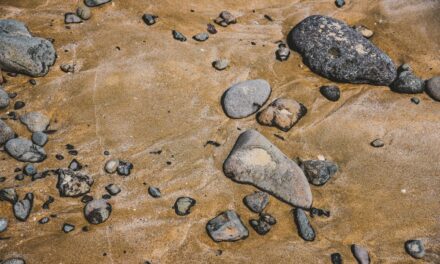Anonymous crawled down a muddy slot in the earth
to put red handprints
on the cave wall, Anonymous who painted the Crab Nebula
onto a rock ledge and translated the winter wind
into black ink
on vellum, Anonymous the unknown
worker, toiler in darkness, craftsman with a name
drowned in shadow. All our works are but footnotes to the creations
of Anonymous…
José Angel Araguz: So begins Jay Leeming’s “Stolen from the Cries of Ravens and the Red Smell of the Wind,” a poem whose main themes are the evolution of art both as process and as instinct, and the way in which all of mankind’s material accomplishments mean nothing in the teeth of wind and time.
Y’know, light stuff.
In all seriousness, though, there is a deftness to the lyric voice in this poem that keeps the reader engaged and the narrative fluid despite the big concepts driving it. As Leeming’s poem traces ideas of ancestry from the get-go, I cannot help but read into the poem a kind of poetic ancestry, other poems that this poem seems to point back to and be kin with.
The first that came to mind was “Hands” by Robinson Jeffers, which starts:
Inside a cave in a narrow canyon near Tassajara
The vault of rock is painted with hands,
A multitude of hands in the twilight, a cloud of men’s palms, no more,
No other picture…
These opening lines echo Leeming’s. Both poems make use of the image of handprints, but where Jeffers reads into it a connection to earlier humanity and life, Leeming takes the symbol of the hand to begin a meditation on the artistic process. His “Anonymous” is fast at work in the first stanza, throughout time and mediums. When the speaker of Leeming’s poem says “All our works are but footnotes” to the work of Anonymous, he is acknowledging the precedent and connection to Anonymous via art, as if each new artwork was a way for an artist to turn and face those that came before and raise a hand in greeting.
I find another poetic “ancestral” link via the layout of the poem. Noting how it is structured in eight-line stanzas on the page, I immediately thought of Lord Byron’s “Don Juan,” a carnival of a poem that doles itself out in the eight line stanza known as ottava rima. Beyond sheer number count, where Byron and Leeming meet is in ambition. Byron’s poem is a favorite of mine not for sheer virtuosity (though hundreds upon hundreds of rhymed stanzas is no small feat) but for the elasticity Byron is able to work into his lyrical line, a line able to hold politics, myth, literary criticism, and humor.
Leeming accomplishes a similar feat as he moves from meditating on the “early works” of Anonymous to casting an eye to our contemporary world:
…So short a journey
from runes carved on a ship’s bow to egg tempera
on a walnut board, from manuscripts illuminated with the colors
of crushed acorns to a thirty-foot-high poodle
constructed of pink birthday balloons
and neon-green hubcaps.
As Leeming’s poem comes to its conclusion, the speaker tells us of a tribe “whose every member/ was born blind” and:
who out of the cries of ravens
and the red smell of the wind carved a spiraling labyrinth of skewed huts
and towers crafted only in jubilant answer to the visions
of the inner eye…
This image of a blind people creating in the dark returns us to the opening note of the poem, back to Anonymous and how little we know of the humans inhabiting that era aside from what they left on a cave wall. Reading these lines, the reader is once again before Percy Bysshe Shelley’s “traveler from an antique land,” who tells us about Ozymandias and his ruins. But where Ozymandias, that “king of kings,” asks us to “Look on my works, ye Might, and despair!,” Anonymous’s call, according to the last line of Leeming’s poem, is to create art despite the knowledge that it will be “…scattered to all the thousand/corners of the air where no hand or eye will ever find it again.”

